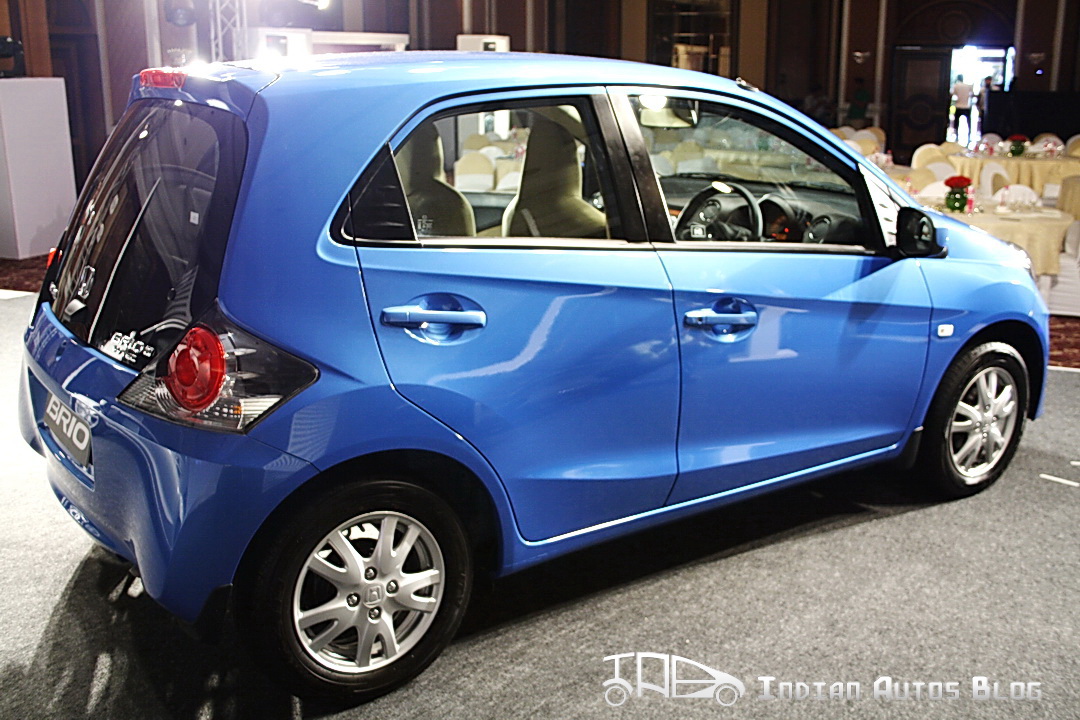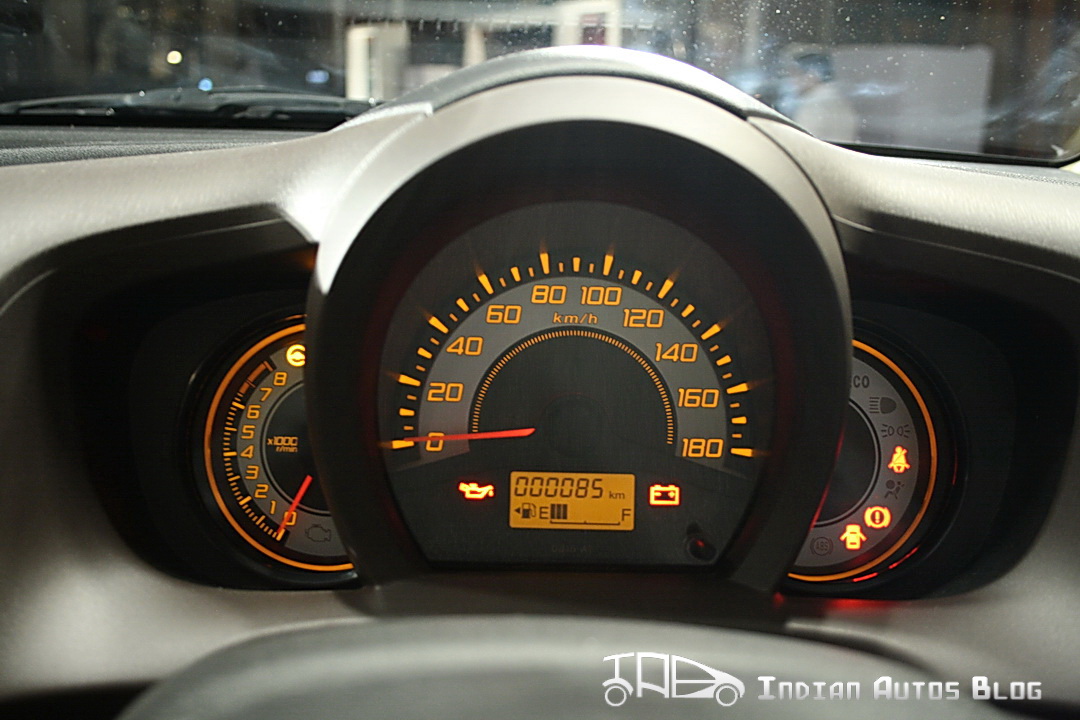First Look: Honda Brio – a Honda for everyone!
Like it or not, Honda is considered to be a premium brand in India. At this point auto aficionados around the globe would be going WHAT??. But it is true and so is the fact that Indian consumers perceive Honda cars as desirable and aspirational. Brand Honda also enjoys a cult following in India where there is saying ‘Once you go Honda, you don’t go back’. So what happens when a premium brand decided to go mass market?
This is when the Brio comes into picture. The second largest Japanese automaker has decided that it wants to put an end to Maruti Suzuki and Hyundai’s small car domination in India. The Brio is Honda’s little warrior out to compete with proven products such as Swift i10 and Wagon R.
The Brio concept was displayed at 2010 Auto Expo in India for masses to see and give their feedback. The interesting fact is that Honda did not change the concept much when putting it into production. The Brio was first launched in Thailand and finally it made its way to India last week. So what does the Brio promises to the masses? Let’s find out:
The Brio’s design language is futuristic and dynamic to appeal to the young generation. Earlier, Honda was criticized to keep their designs conservative and orthodox which only appealed to the octogenarians. However, the Brio design language is a breath of fresh air in the B hatchback segment.
Walk up to the Brio and you will notice that it is a very small car. Visually, it feels more in the league of i10, A star rather than Swift or Ritz. You will also notice that the design is pitch forward rather a swept back one. The Brio’s design is a combination of 2 triangles thus there are many sharp lines that run through the body of the Brio. The idea is to make the Brio as aerodynamic as possible to reduce drag and boost fuel economy.
The front features a blackened out wide air dam and with a tiny chrome grill on top. The leaf shaped headlamps have double barrels – one for the head lamps and the other only for the indicator.
The side profile features 2 sharp lines – one rising from the front bumper going all the way to the tail lamps and the other one starting from the front door and meeting the wheel arches. The wheel are arches are slightly flared to add further touch of aggressiveness to the design. The roofline doesn’t slope much in the Brio thus liberating ample headroom inside. The window line compliments the character line by slightly sloping upwards.
The rear is the most unique aspect of the Brio. It is the only hatchback that features an all glass boot lid instead of a conventional ‘glass in a frame’ set up. This definitely raises the question ‘Is the boot lid fragile?’
I tried banging it thrice, nothing happened. However, I am still not convinced that the glass lid is such a good idea, not only from the fragility point of view but also from the safety aspect. A glass lid would not be able to disseminate energy in case of rear impact.
The rear also features triangular tail lamps with a huge central circle that make them look like afterburners of a jet plane (a trick from the elder sister - Honda Civic). The tail lamps protrude in the side profile of the Brio thus completing the package.
Overall the design language is very modern and contemporary. It fits the bill of a 21st century hatchback with its glass lid and rocket shaped tail lamps. Honda has made considerable effort to make the Brio stand out from the crowd which will definitely appeal the growing youth of India.
Don’t be deceived by the small looks of the Brio. The overall length of 3610 mm may visually be very small but the Brio is a perfect example of a relatively new but revolutionary concept called ‘Smart Packaging’. The idea is to effectively liberate as much space inside by intelligently packing the interiors.
Step inside the Brio and you notice that Honda hasn’t compromised its legendary Japanese quality proposition to bring down the price tag. Honda has made sure to provide reasonable and eye pleasing levels of fit and finish to welcome the first time Honda buyers.
Unlike the Toyota Liva, the Brio actually feel like a true Honda and not a contract manufactured car with a Honda badge on it.
The interior draws inspiration from a lot of other Honda models like the City and the Jazz. Unlike the Swift, the Brio gets a combination of a light beige and chocolate brown dashboard. This makes the cabin feel very roomy and full of light and air. However, some exposed metal parts and integrated headrest are clear signs of cost cutting.
The three spoke steering wheel is bespoke for the Brio and provides ample grip to the driver. The dial cluster, gear knob and to some extent the music system are taken form the elder sister - Honda City. The music system is slightly tilted towards the front passenger side making way for an aircon vent and a parking light button. However, steering mounted controls make sure that the driver does not have to extend his arm to operate the music system.
The 2 DIN music system doesn’t have a CD player but supports USB and AUX. That’s a very smart move because CDs are a bit passé and most youngsters prefer iPods and USB drives for in-car entertainment now.
The front seats are thin and have a carved back to liberate more space at the rear. You will be pleasantly surprised to know that the Brio have a very comfortable back seat. The headroom and the legroom are pretty adequate for an average 5.8 guy like me.
However, the Brio, like the Chevy Beat, is a strictly 4 seater. The 5th person at the back will be very uncomfortable and will make others uncomfortable as well. The boot space has definitely been compromised to make more room for the rear passengers. Moreover, the rear parcel tray is stolen by the cost cutting monster.
The Brio is powered by the same 1.2L i-VTEC engine that does its duty in the Jazz. However, it produces 88 PS at 6000 rpm and 109 Nm at 4600 rpm. The power is reduced by 2 bhp to enhance the fuel economy which is 18.4 kmpl as per ARAI.
On paper, the Brio’s power to weight ratio is unmatched because the powerful engine has to only tug 920 kg. The engine is mated to a 5 speed manual transmission whose gear ratios are also tuned for city driving conditions. The front uses Mcpherson struts whereas the rear has Torsion Beam axle.
The Brio is well equipped on the safety side as well. It comes with an i-SRS airbag for the driver and an SRS airbag for the passenger. Along with it, you also get ABS with EBD. The 4 variants coupled together with 6 different color option offer the customer reasonable level of customization. It also comes with 2 year or 40,000 km manufacturer warranty.
Overall, the Brio comes across as a very rounded package for an urban commuter. However, with Swift sitting on 1,00,000 bookings already, the initial response to the Brio may be a bit subdued as was the case with Liva. Adding to that, the lack of a diesel option and only 135 dealers will always hurt the Brio sales numbers.
Nonetheless, it would be exciting to see which specific models of the competing manufacturers will the Brio hurt. We have a strong feeling that the i10’s sales numbers will show a considerable decline in the coming months.
What are your thoughts on the Brio?























